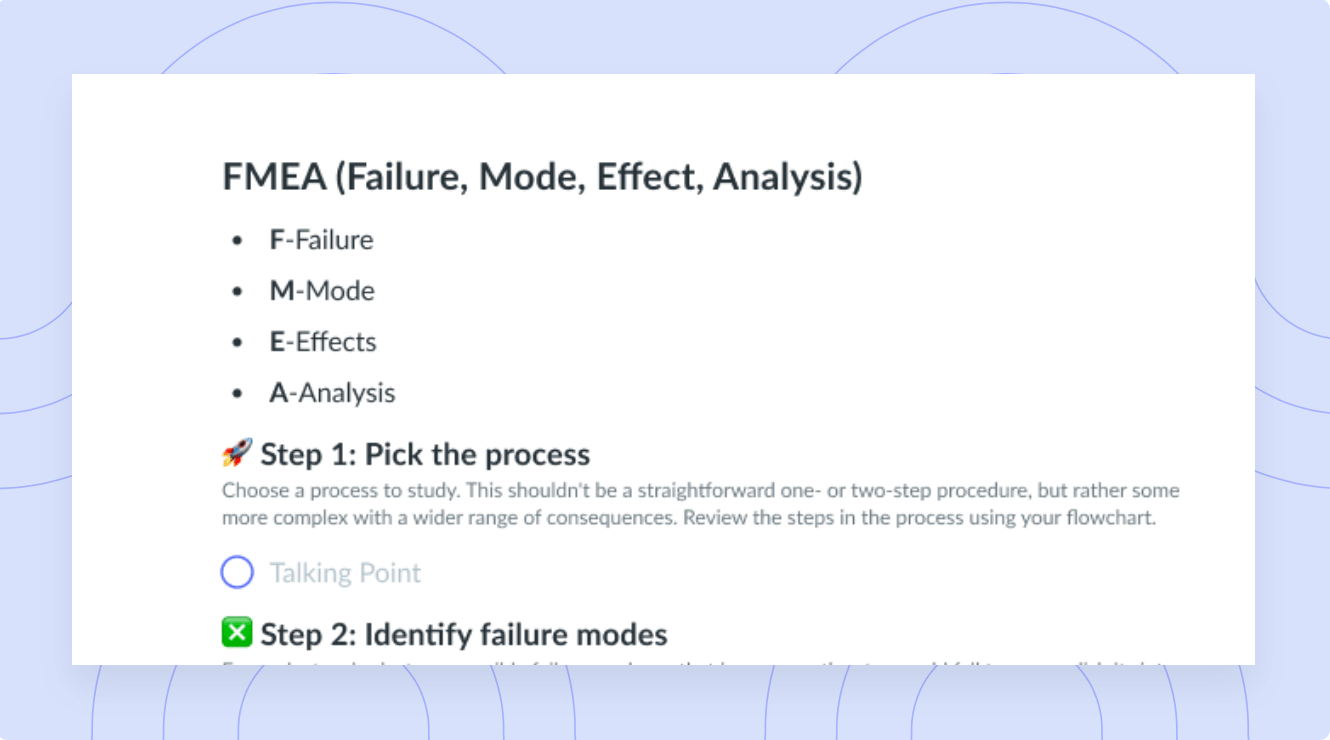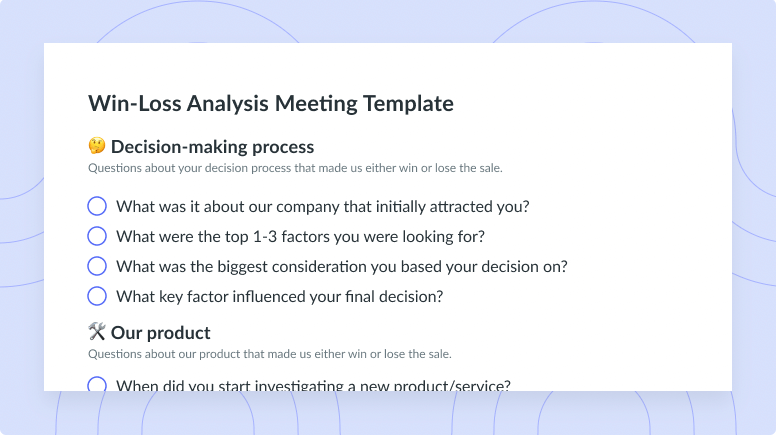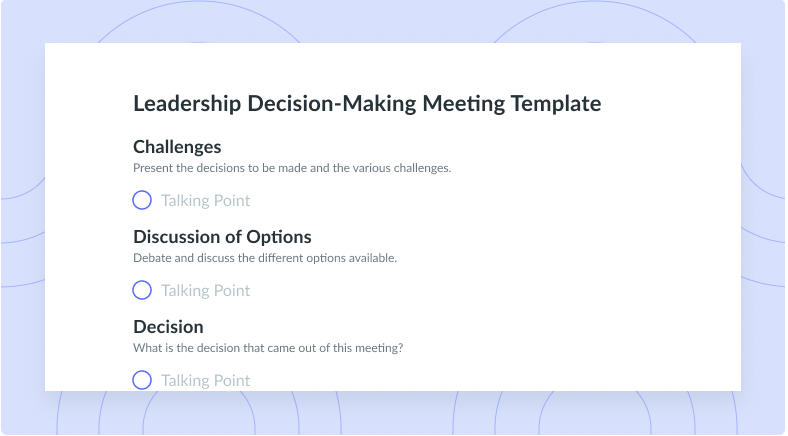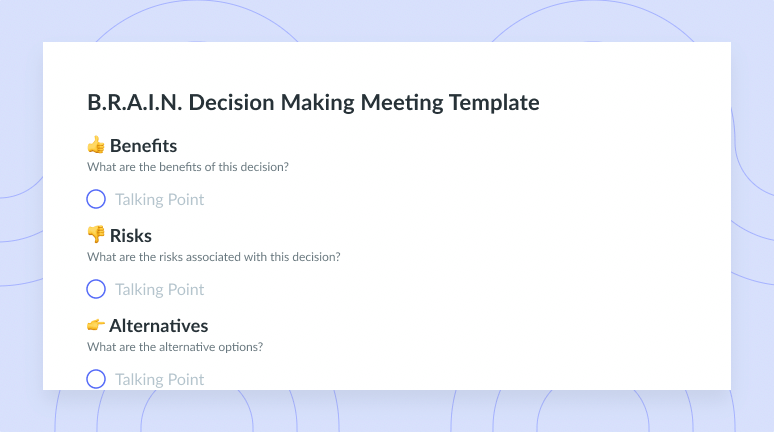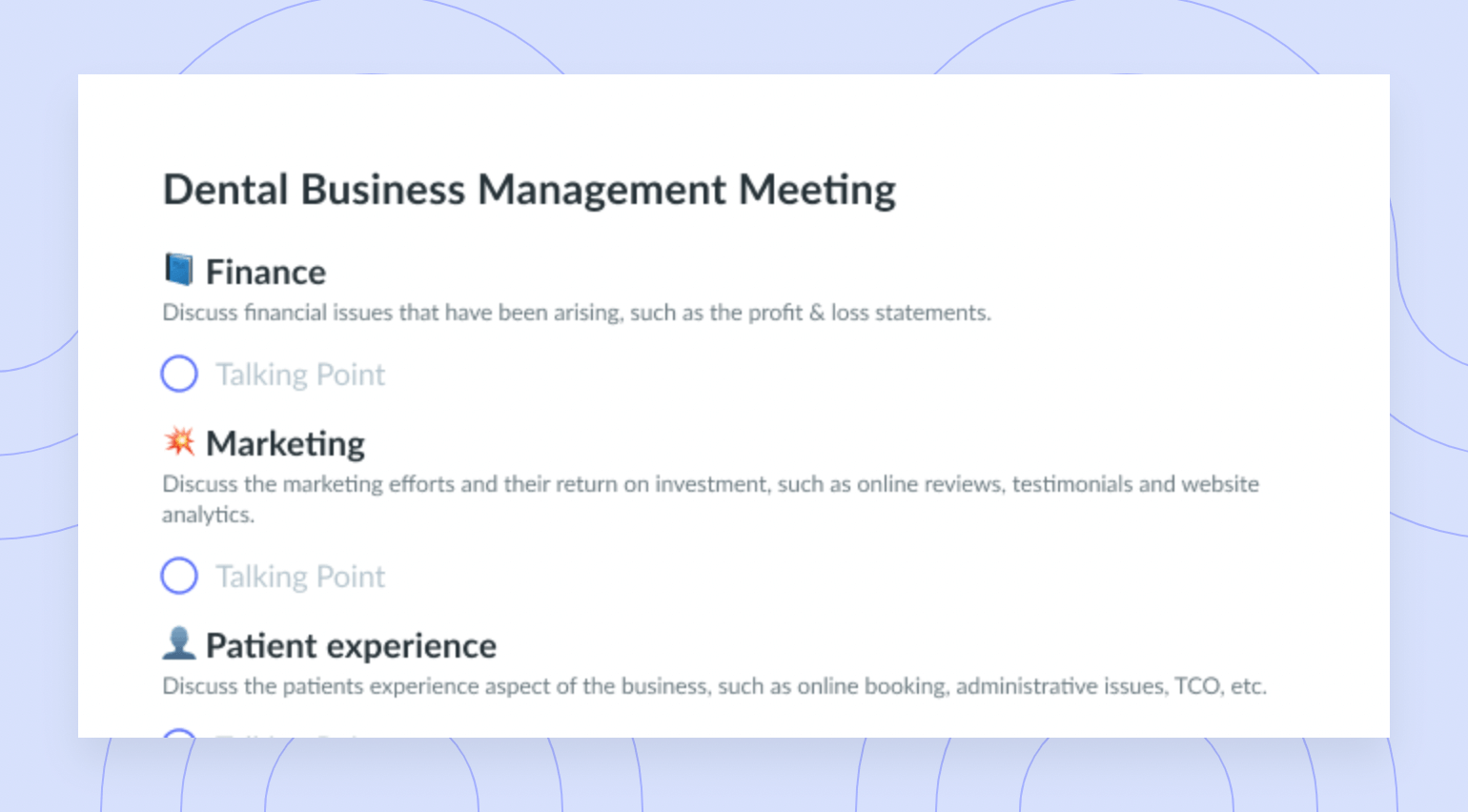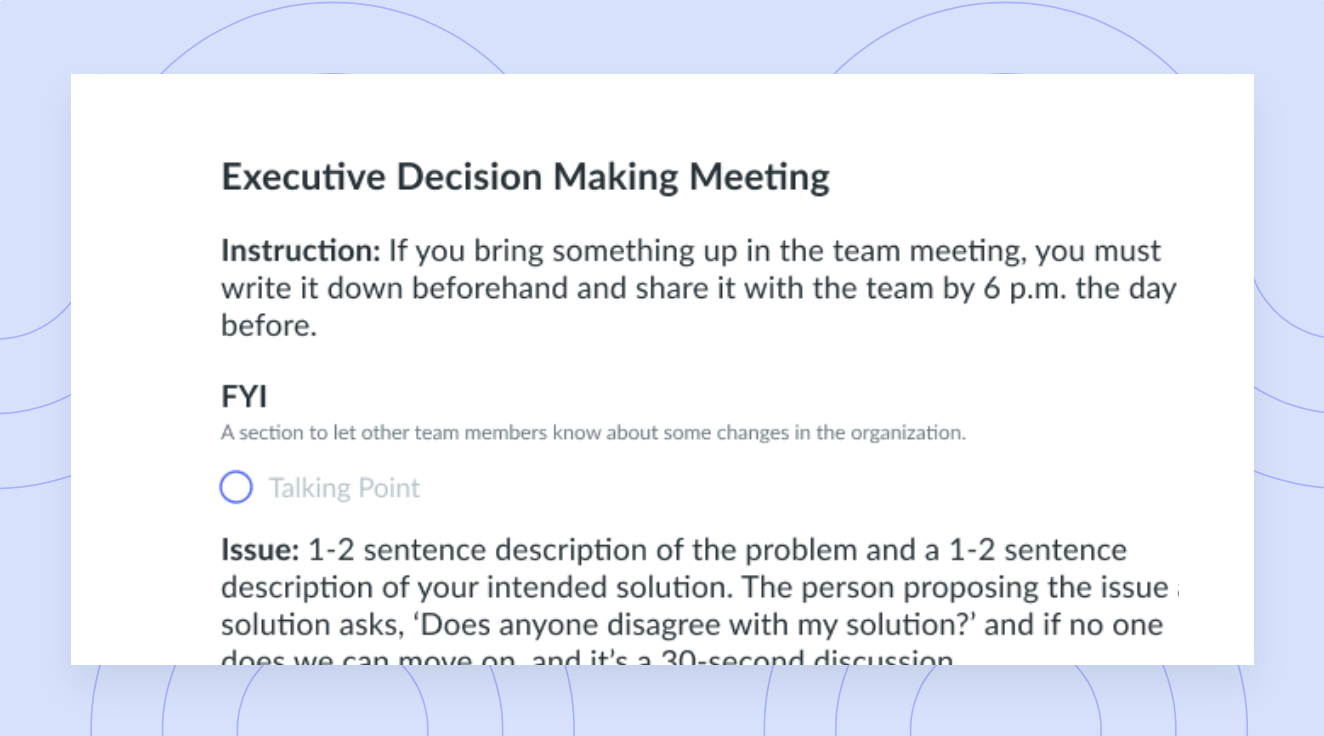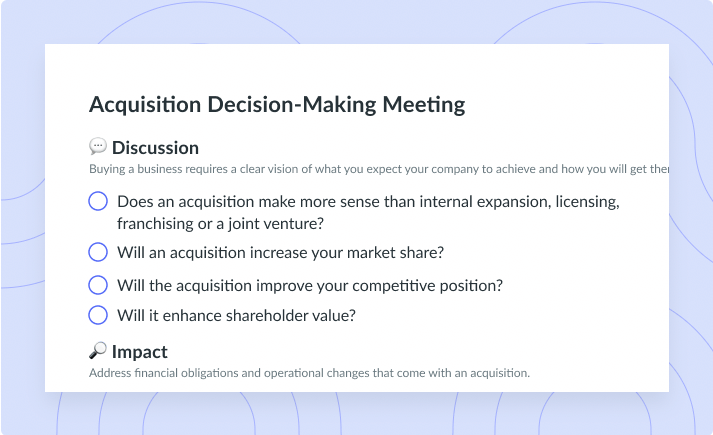Decision Tree Analysis: How to Make Effective Decisions
There’s a lot to learn from trees: project managers can draw inspiration from these wonders of nature when using the decision tree analysis.
There’s a lot to learn from trees: with their roots firmly planted in the ground and branches reaching out in all directions, project managers can draw inspiration from these wonders of nature. Mapping out a situation (the roots) and all the paths you could take to address it (the branches) help you make confident decisions. One popular method of mapping and making choices, decision tree analysis, is based on this very metaphor.
- What is a decision tree?
- How to draw a decision tree
- Decision tree example
- The advantages of decision tree analysis
- The disadvantages of decision tree analysis
- How to properly use a decision tree
- Decision tree analysis tools
What is a decision tree?
A decision tree is a chart full of circles, squares, triangles, and lines that project managers like yourself might use to make complex decisions. Its name comes from the fact that, in its final form, it should resemble a tree (well, maybe without the thick trunk and verdant leaves).
When reading about decision trees in project management, you might also see the term “decision tree analysis.” This term describes everything that comes after drawing a decision tree – namely, putting your creation to good use. The tree maps out each possible scenario and a potential outcome, allowing you to clearly see and evaluate your options for the best possible outcome.
How to draw a decision tree
Decision trees may be associated with complex decisions, but they’re surprisingly simple to make. Just take the below two steps to draw a decision tree:
1 Know the set of choices you can make.
Let’s say you’re deciding whether to use an influx of cash to open a second location or launch a new product. These two options comprise your set of choices. You’ll include each of these choices atop an arrow called a branch. To the left of each branch will be your starting choice node, which is a square. To the right of each will be a chance node, which is a circle.
Now your decision tree will look like this:
Here, each branch represents one of your possible decisions. The initial square is your decision node – it signals to you that you have a decision to make. The circles represent chance nodes, and you’ll see why they’re called that momentarily.
2 Add in your outcomes and numbers.
Let’s keep this simple and say that each of the above choices could lead to either success or failure. Let’s also say you know the chances of success and failure for each choice, as well as the potential profit and loss associated with each. With this information, you can add more branches to your fast-growing tree – and even some leaves.
Here are the stats we’ll use for this example:
- Opening a new location has a 40% chance of success that would yield a $50,000 profit. It also has a 60% chance of failure that would yield a $30,000 loss.
- Launching a new product has a 48% chance of success that would yield a $65,000 profit. It also has a 52% chance of failure that would yield a $78,000 loss.
You should add a branch for each of the successes and failures. Each branch should also have its chance indicated. These branches should reach out to an end node representing the final outcome. You’ll usually see this as a triangle with its tip pointing left, but you might see it as a circle too.
Your final decision tree will look like this:
From this decision tree, you can see that your most potentially successful path (launching a new product) could lead you to $65,000 in profit. However, it also comes with a potential loss far greater than that of failing to successfully open a new location. Your tree diagram can’t tell you which of these choices is the better one – it’s not quite a decision-maker (that’s you) – but it can show you the likeliest outcomes.
Decision tree example
In addition to the above made-up example, here’s a neat, straightforward financial management decision tree we found on Investopedia:
We find this one interesting because it’s less about deciding between two possible choices than it is about choosing to do either something or nothing. From this decision tree analysis, we see that even inaction can have profound consequences.
The advantages of decision tree analysis
Now that you understand the basics of decision tree analysis, you might feel a bit relieved – it is this easy, right? Yes indeed – most of the reasons why project managers favor decision tree analysis relate to its simplicity. These include:
1 They’re clear.
In decision trees, lines represent choices and their chances of going a certain way, and they all lead to endpoints with clear outcomes. There’s nothing complicated about this setup, especially given how unclear and cluttered other project management visuals can get.
2 They’re efficient.
The clarity of decision trees goes hand in hand with fast yet thorough analysis. The visuals in front of you offer crystal clear mapping of where your decisions will end up.
3 They’re not rigid.
If there’s suddenly a third decision to add to our two-decision example from earlier, that’s no problem. It takes just moments to add a new choice and corresponding chances and finances to your current decision tree. In fast-moving environments, this flexibility can come in handy.
4 They fit into all project management styles.
If you suddenly decide to switch from waterfall project management to agile or kanban, your decision tree can come with you. You won’t have to modify it to match your new project management style, no matter the direction you take.
The disadvantages of decision tree analysis
Occasionally, the simplicity of decision trees can actually be their Achilles heel. Here’s why some project managers may find these often efficient diagrams unhelpful.
1 They get complex if you have lots of uncertain outcomes.
If you’re weighing more than just a few choices that each have several potential outcomes, your decision tree might look more like a thick bush than a luscious oak. All the information could blur together into one overwhelming mass instead of being easy to follow.
2 They overemphasize paths with more outcomes.
In the simple decision tree examples given above, we saw only pairs of choices and outcomes – no trios or anything larger than pairs. In some cases, though, a decision tree might have one choice with two outcomes, another with five outcomes, and another with seven outcomes.
The simplicity of pairs doesn’t hold with these multi-outcome paths. The more outcomes a path has, the more the decision tree emphasizes that path. This structure may bias you toward making a decision along the larger path when a choice among the smaller path is smarter.
How to properly use a decision tree
Yes, decision trees are remarkably simple, but it’s still helpful to see a firm set of instructions on how to use them. The good news is that, like decision trees themselves, these instructions are straightforward.
1 Determine your realistic options.
Let’s rewind to our earlier example of opening a new location or launching a new product. Perhaps these weren’t our only possible choices – maybe we could have also bought new company vehicles or hired new employees.
However, these decisions don’t appear on the tree because we’ve determined they’re not realistic for this scenario. In general, when you’re using a decision tree, there’s no reason to include decisions you can’t actually make, even if they sound nice in theory. So be sure to stick with the options that are most realistic and actionable for you.
2 Estimate your chances of failure and success.
There’s no empirical way to figure out whether an action will succeed or fail, but estimating is certainly a viable option. After all, a 48% chance of product launch success isn’t a guess out of thin air. It’s a rough estimate based on how much we think we’ll have to spend on the action versus how much revenue we predict it will generate. Financial forecasting is your friend here.
3 Calculate expected value scores.
The $65,000 potential profit from our successful product launch example is enticing, but is it actually the safest option? To find out, you should calculate the expected value (EV) score of each decision.
4 Make a decision.
Given the above EV values, opening a new location may be the safer bet. Although the new product could lead to more profits, its expected value score is substantially lower than for opening a new office. Don’t let the possible profits fool you – diligently, carefully calculate your EV scores and use them to make smart decisions.
Decision tree analysis tools
Ready to make your first decision tree? There are all kinds of tools available for doing so. They include:
- Traditional pen and paper. Project managers used to draw their decision trees by hand, and if you like to write things out, this may be the right thing for you. Just keep in mind that after enough scratch-outs, your tree could start to look pretty messy.
- Meeting room whiteboard. A whiteboard decision tree is basically a larger pen-and-paper decision tree that you can erase, keeping your decision tree looking cleaner. Plus, since it’s bigger and in the meeting room, it makes team collaboration way easier.
- Decision tree software. For neatness and easy sharing, decision tree software is the way to go. Most decision tree software is as easy to use as traditional pen and paper, plus your decision trees won’t take up any physical space. That said, you’ll often have to pay for your software.
- Spreadsheets. If you don’t want to pay for additional software, you can easily transform an Excel spreadsheet or Google Sheet into a decision tree. Start with a decision node in the leftmost column, then reserve the next column for branches. The column to the right of that can hold your choice nodes, and so on until you’ve built a beautiful tree out of an ordinary spreadsheet.
With decision tree analysis, the choice is yours
Decision tree analysis empowers you to make meaningful, smart choices. They’re so easy to create and work with that, as long as your decision isn’t overly complex, you lose little by at least trying them out.
If you’re a bit hesitant to play around with decision tree analysis, ask your team to help you create one at your next big meeting. Fellow’s meeting tools can keep your discussions on track and maximize their productivity.

Pro tip
Using a meeting management tool like Fellow can organize any decision made and track projects to be as productive as possible.










